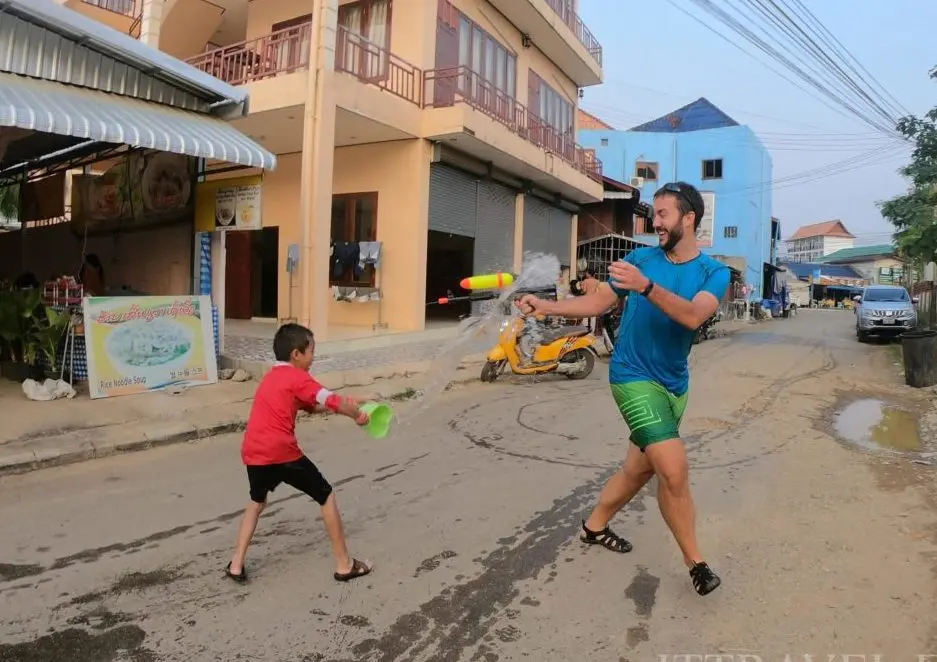
Dyngus Day in New Year - Pi Mai Lao in Laos
Like in many south-east asian countries (Thailand, Cambodia, Burma and part of Vietnam) in Laos new year is celebrated according to lunar calendar. In all of these countries people are using two calendars: Gregorian for business and official use and lunar for religious affairs.
And since every occasion for having fun is good, the New Year is celebrated in this part of the world up to three times (Chinese New Year is also good time to organize a party;)).
Lunar New Year - the "Pi Mai Lao" festival, also known as "Songkran", usually falls between 13/14 and 16/17 April and lasts three days. It symbolizes not only the new year, but also the entry of the sun into the first astrological sign of the zodiac (Aries) and the beginning of the rainy season, i.e. the time of harvest.
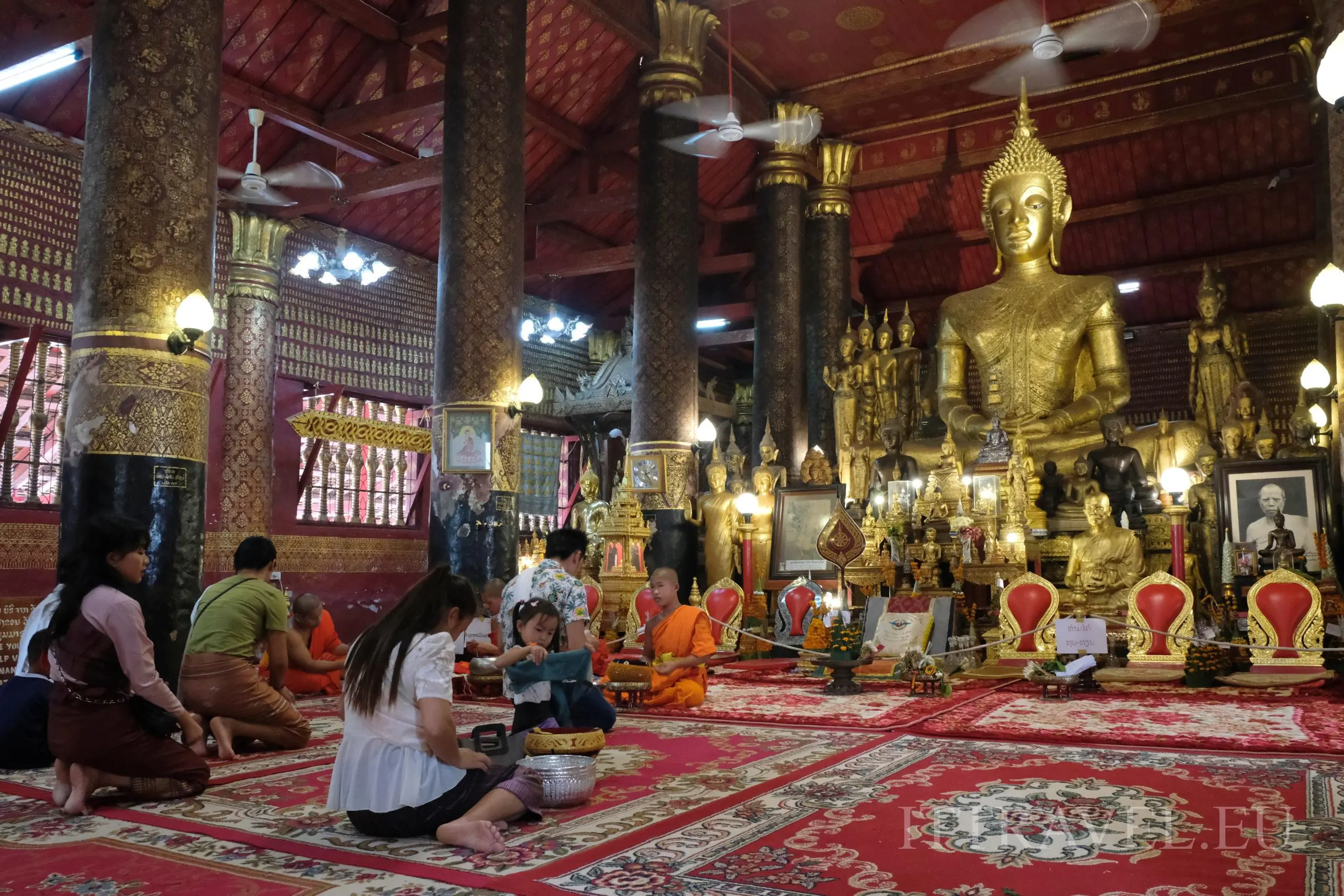
Second day is middle - it is not in new year nor in old. It's time to rest, you can't work on this day. Only pleasant activities such as meeting with family and friends are allowed. In the evening, there are parties where everyone dances in a group, and they are often accompanied by traditional dance shows: "Lamvong."
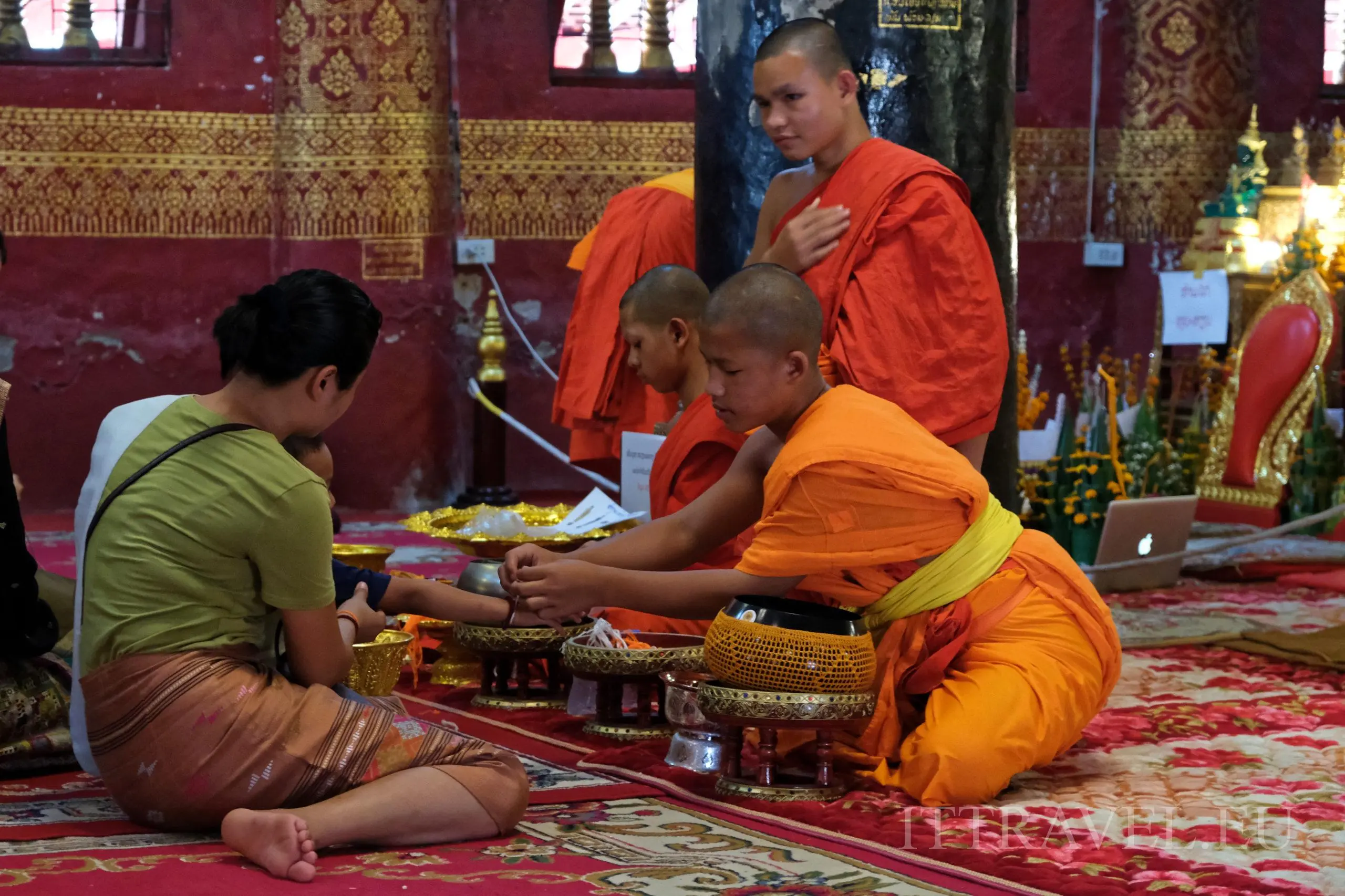
On the third day, the new year is welcomed! In temples, sacrifices are made to monks for the sake of prosperity. Young people are visiting their parents, grandparents and older family members, pour water over their hands, asking for a blessing and forgiveness for all bad things they did in the past. There is also a special family ceremony called Suukhwan in the homes (ສຂູ່ ວນັ) or Baci (ບາສ ີ). Participants tie white bracelets on each other's wrists, which are to bring prosperity and happiness in the new year. Colorful processions are also organized in many larger cities. The one in Luang Prabang is especially famous.
On this day, the inhabitants of Laos also have a custom of releasing animals (birds, fish). They believe that doing so will free them from disease and bad luck. Unfortunately, in practice, it looks like that in front of the temples birds are sold in tiny cages and fish in plastic bags The believers going to the temple by animals to "set them free". We respect the local tradition, but the form it has now taken seems cruel. The birds may still survive, but after a day in the heat, the fish in the bags will probably be ... fish soup.
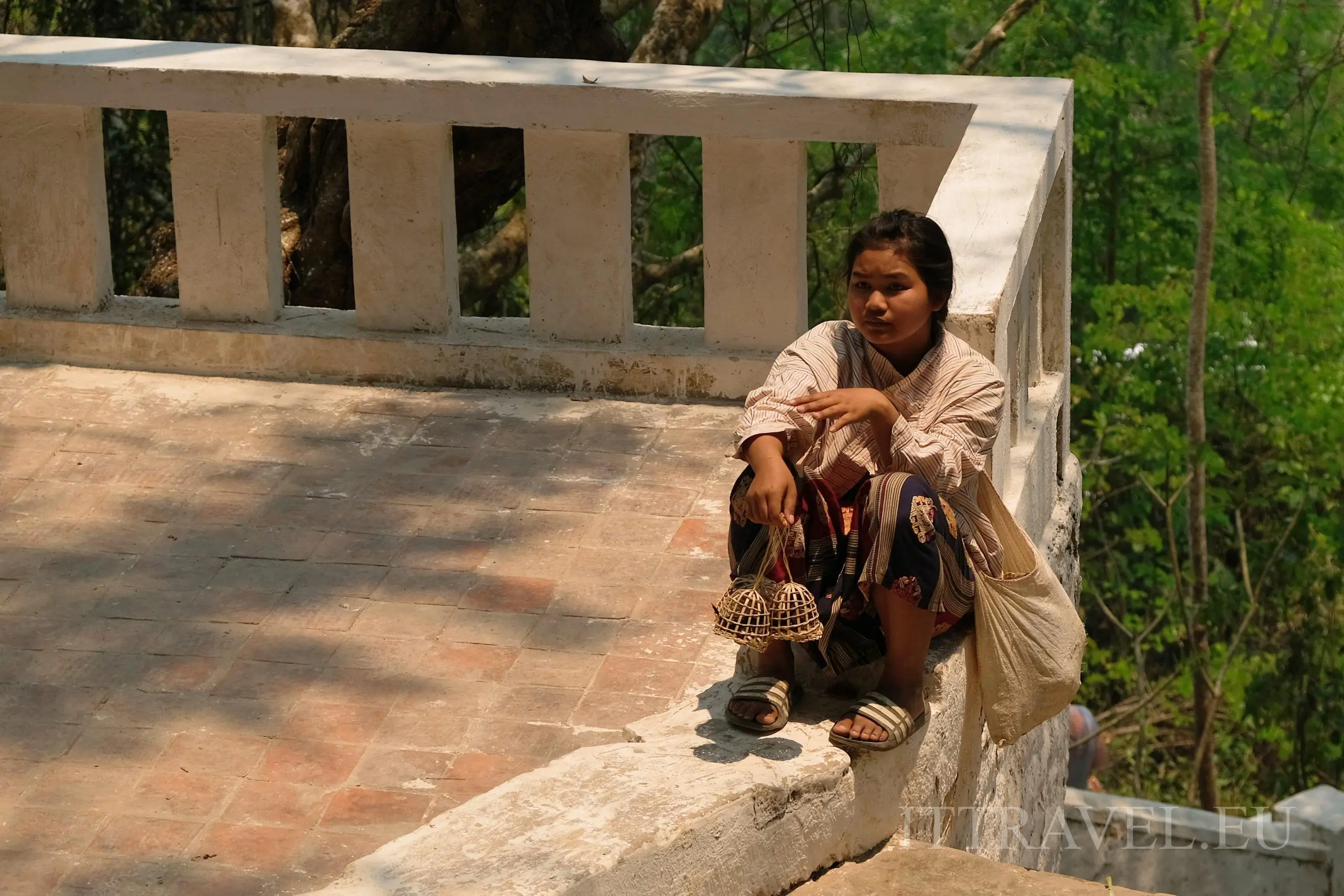
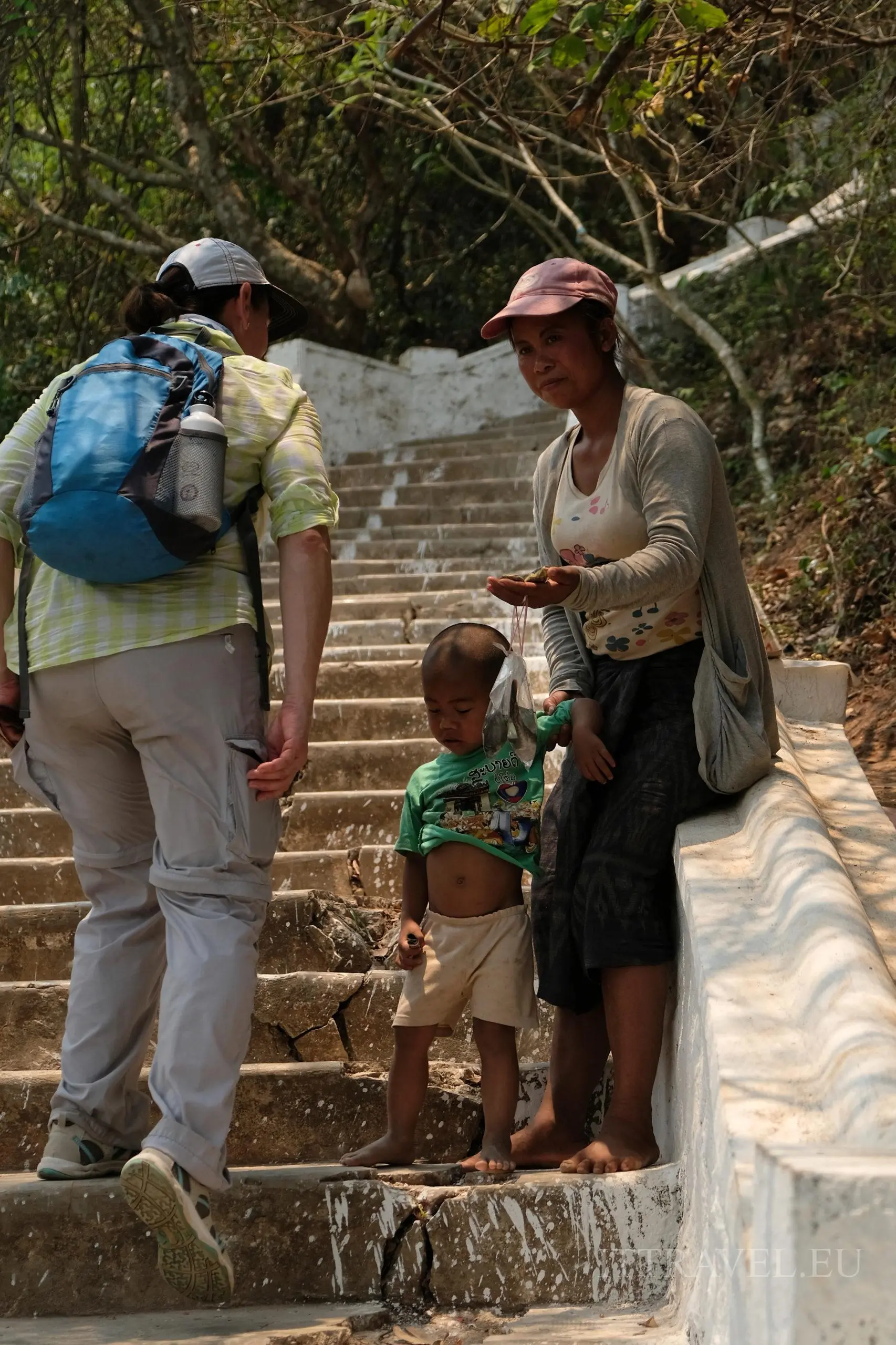
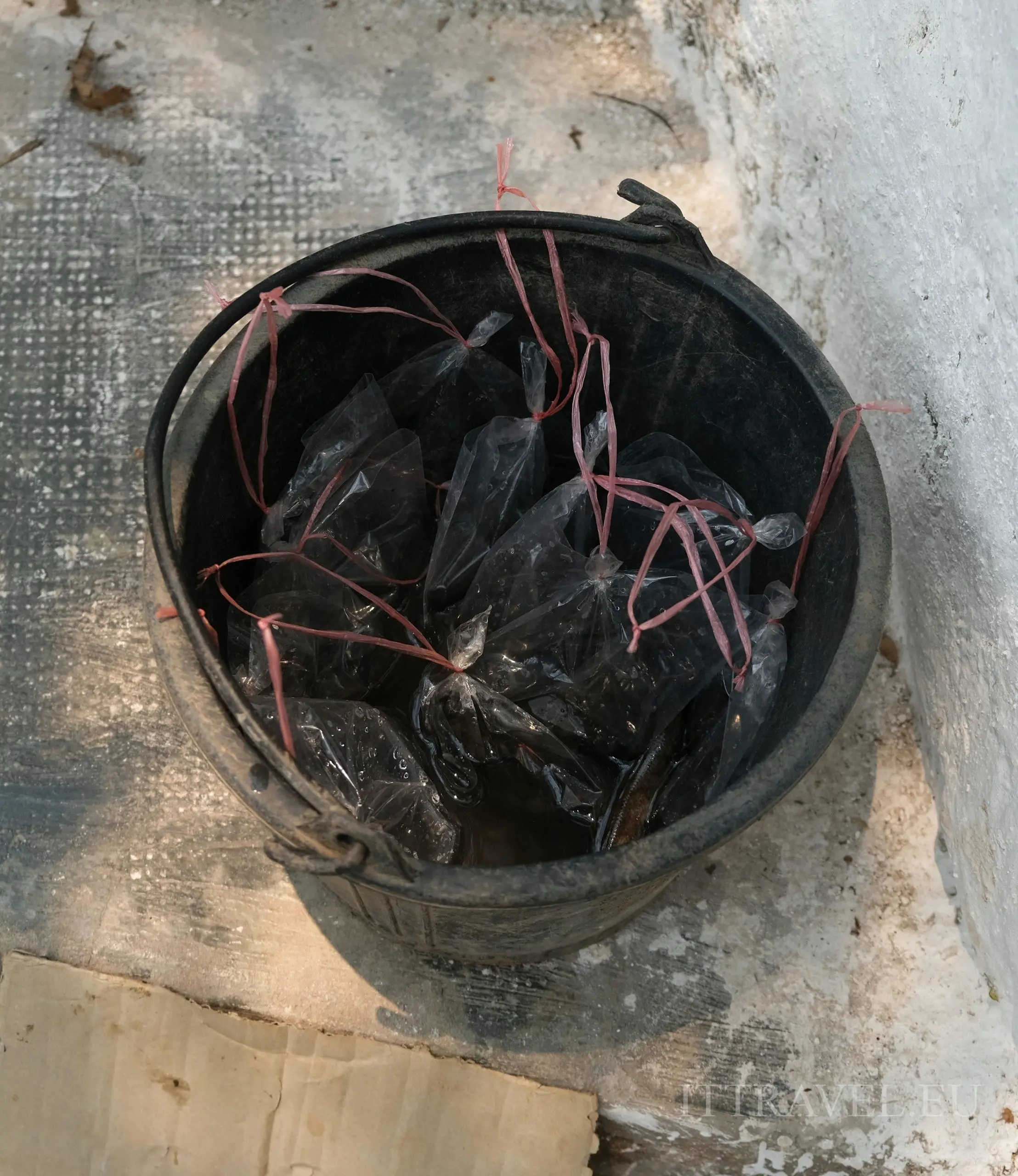
What's going on in the streets?
In some cities, events start a few days earlier. During the three-day festival, everyone sprinkles everyone with water. Not only children and adolescents have fun, but even grandmothers can wait on the road with a hose (as if they are pouring water over the garden 😃 ).
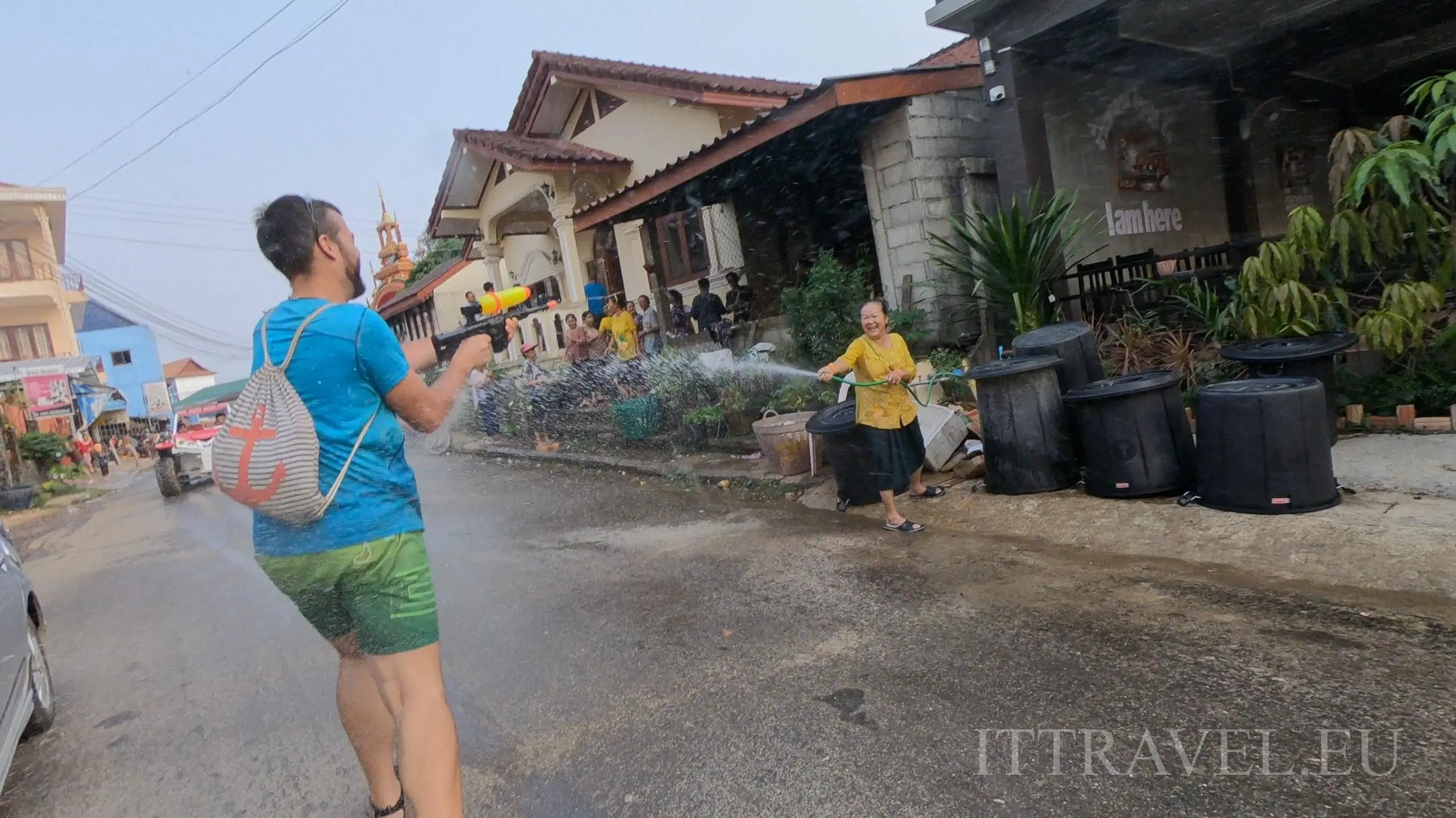
Often, by the road, there are inflatable pools and a supply of buckets of water, plus beer and lively music. Party-goers happily dance around the pool and splash with buckets at themselves and everyone who passes by. There is also a second version of revelers - groups that sit on pickups with water guns and drive around the area.
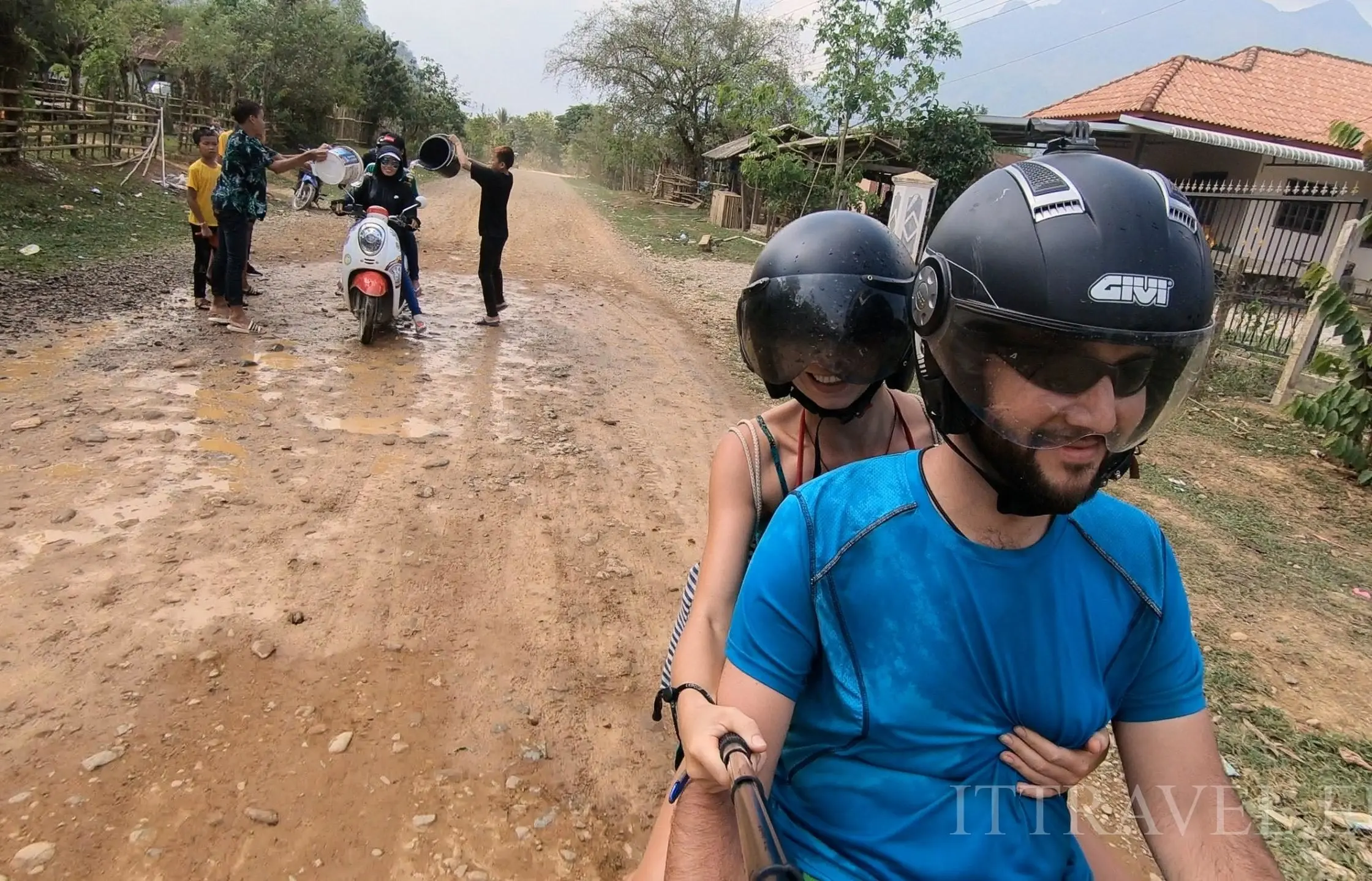
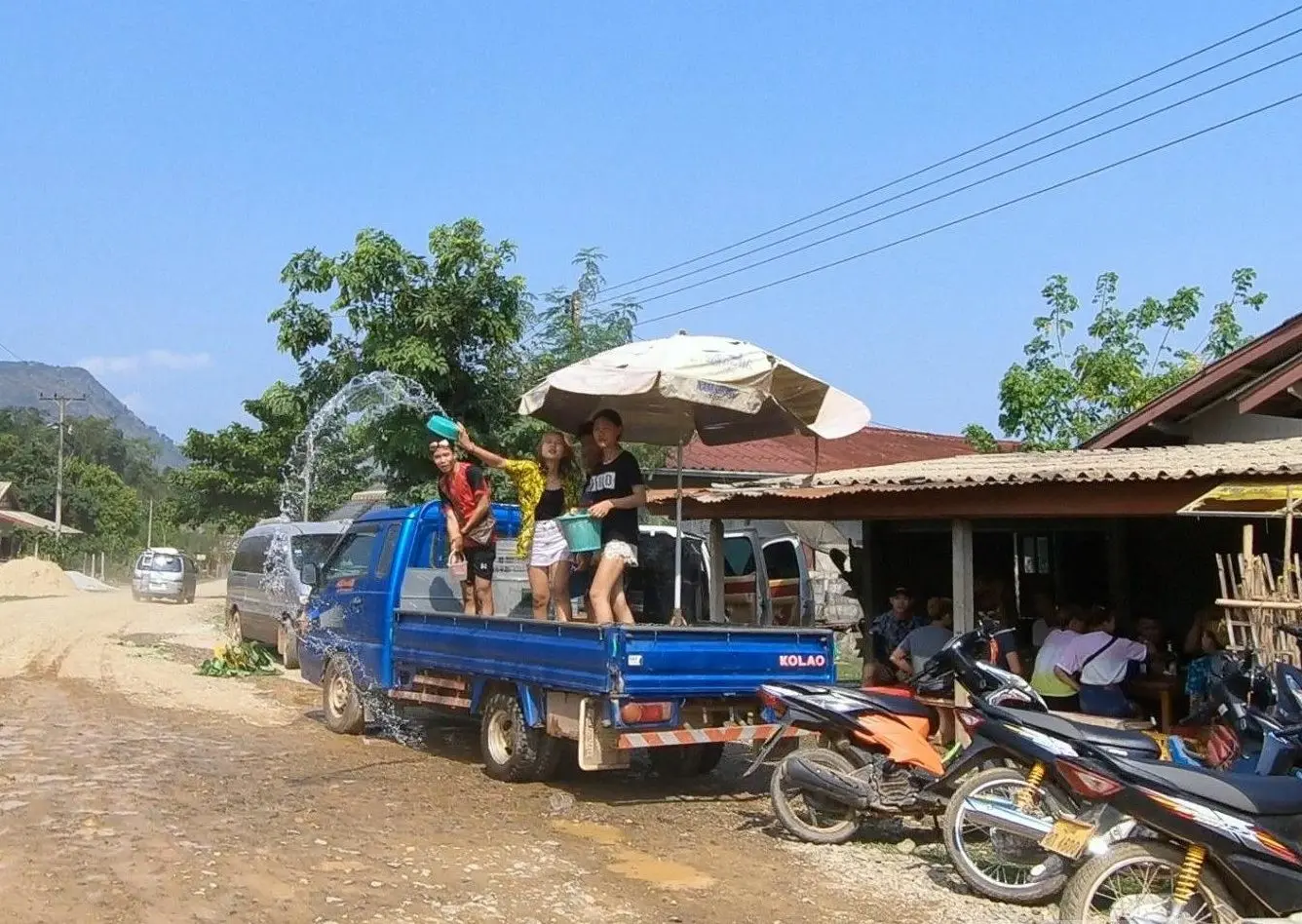
The whole event was confusingly reminiscent of a Dyngus Day, in 2019 and 2020 it even coincides more or less in time (one day difference). However, April is the hottest season in Laos and with 40 degrees heat such a holiday makes more sense. After a long walk, we were even grateful when someone poured a bucket of water on us! Although you know what it is like when there is too much of something. The first day we had a great time, the second day was also ok, but on the third day we were tired of the fact that we cannot walk more than 300 m dry. Sitting in wet pants in the pub is a bit ... not cool. There was nothing left for us to do but arm ourselves with water guns and join the fun 😃
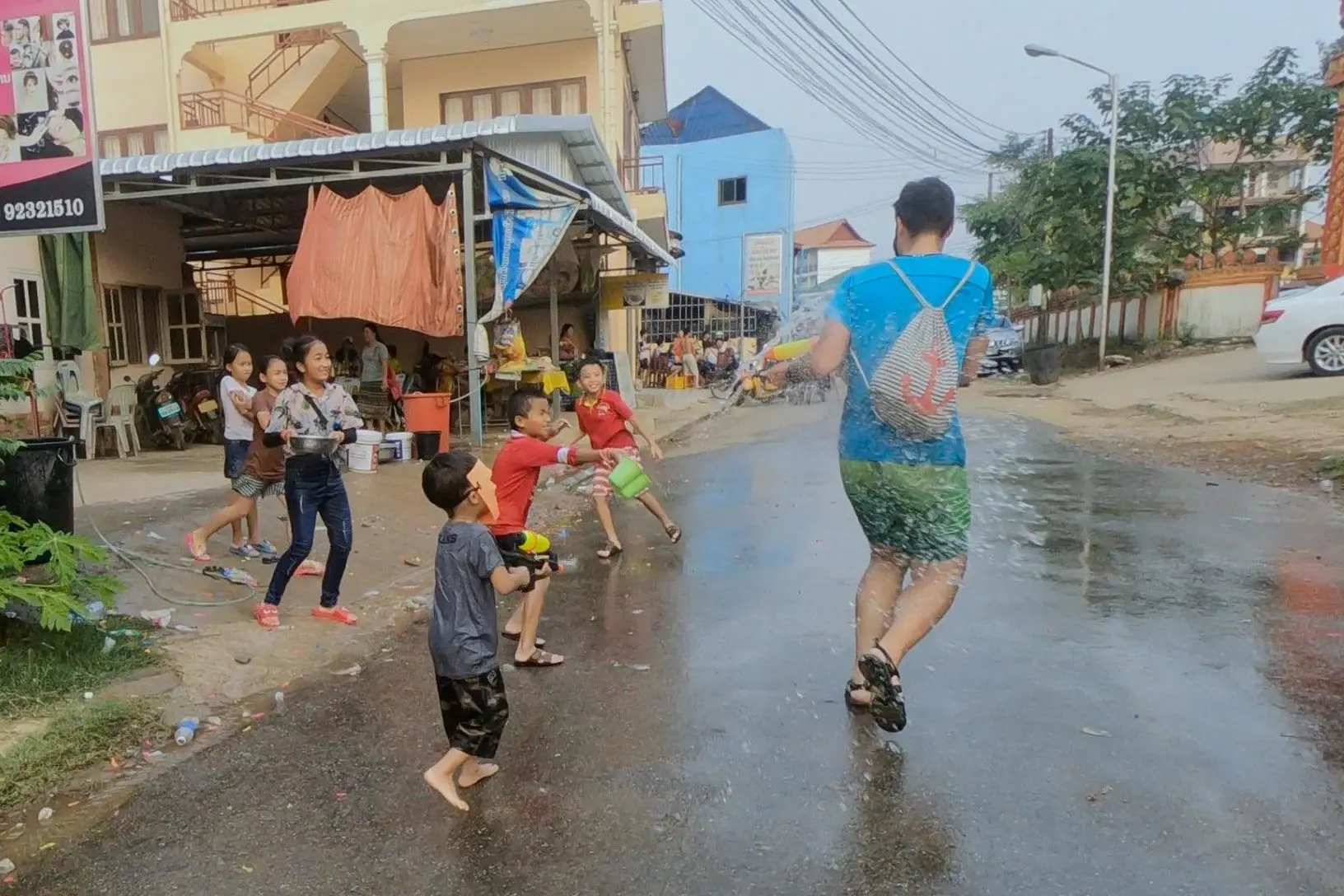
Interesting facts
- It is surprising that the traditions of pouring water overlap in the Slavic countries (Poland, the Czech Republic, Slovakia, western Ukraine) and the countries of Southeast Asia. Despite such a great distance and differences in culture, the message is similar: end of a dry or winter season, beginning of spring.
- Pagan Slavs also poured water on themselves and the house, which was to symbolize cleansing of dirt and disease.
- In addition, both holidays are practically the same time.
- Is it pure coincidence? How do you think?
- The date in which we have Easter is movable because it is determined according to the... lunar calendar (which the Jews used to use).
- Many other Asian countries celebrate the new year in March or April: India, Sri Lanka, Nepal, Bangladesh, however, as far as we know, the custom of pouring water over each other occurs only in the Buddhist countries of Southeast Asia.